Abstract
The influence of the route and schedule of vaccination on the time course of the immune response was studied in groups of rabbits injected with influenza virus antigens. The route and schedule of inoculation determined the maximal level of serum antibody. The routes can be ordered intravenous, intraperitoneal and subcutaneous in descending order of efficiency. Multiple doses improved the levels of antibody by all routes, while antigen in Freund's incomplete adjuvant suppressed the initial response. Changes in the ratios between the three tests indicated differences in avidity of antibody produced during the initial and the secondary responses.
Full text
PDF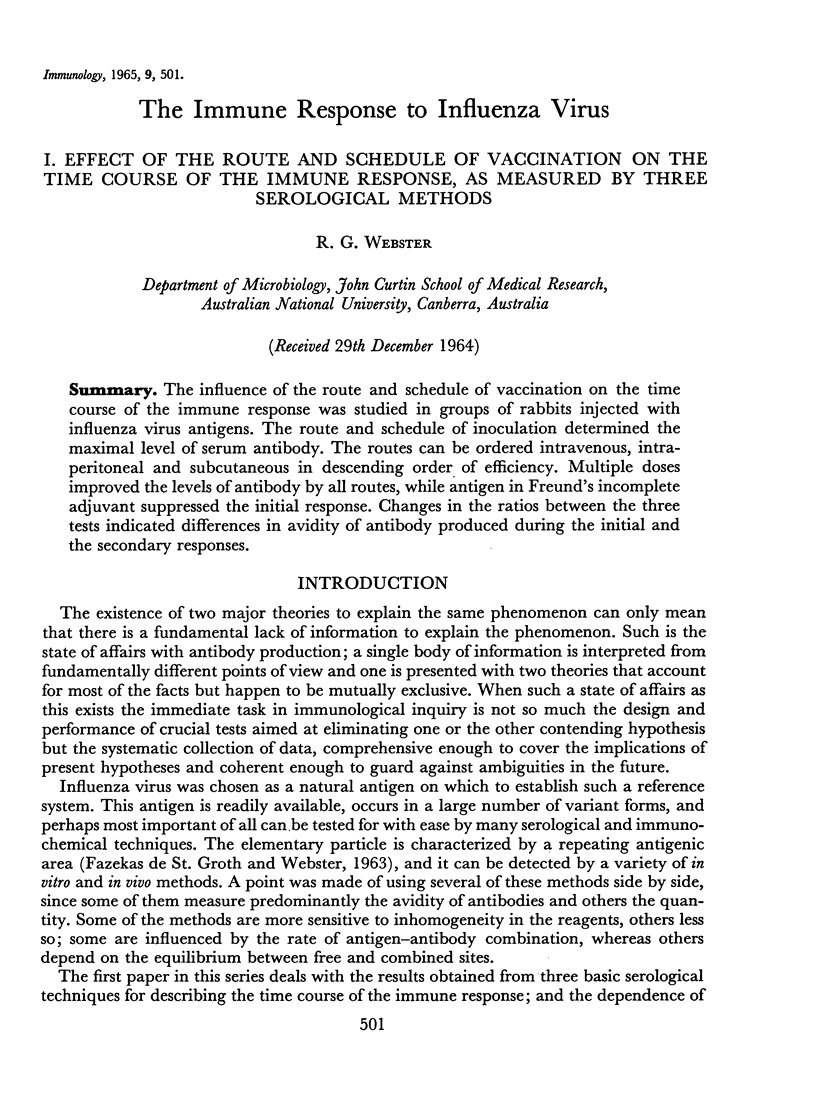
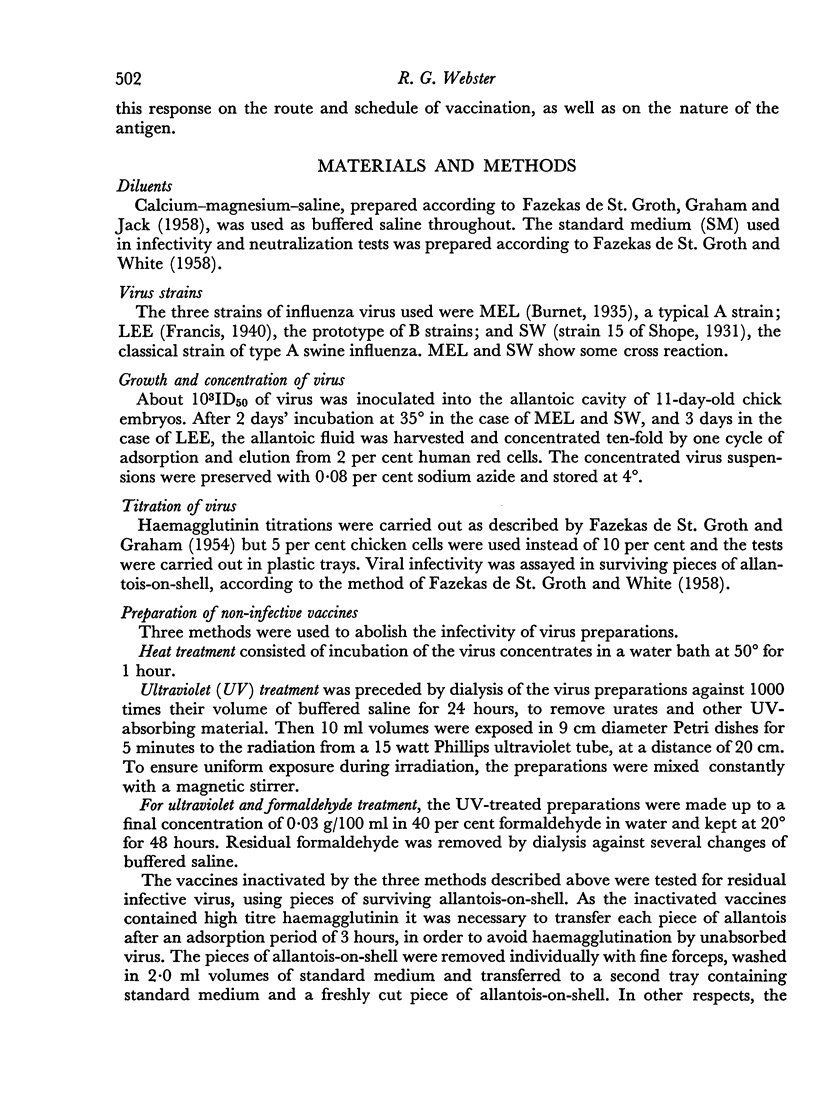
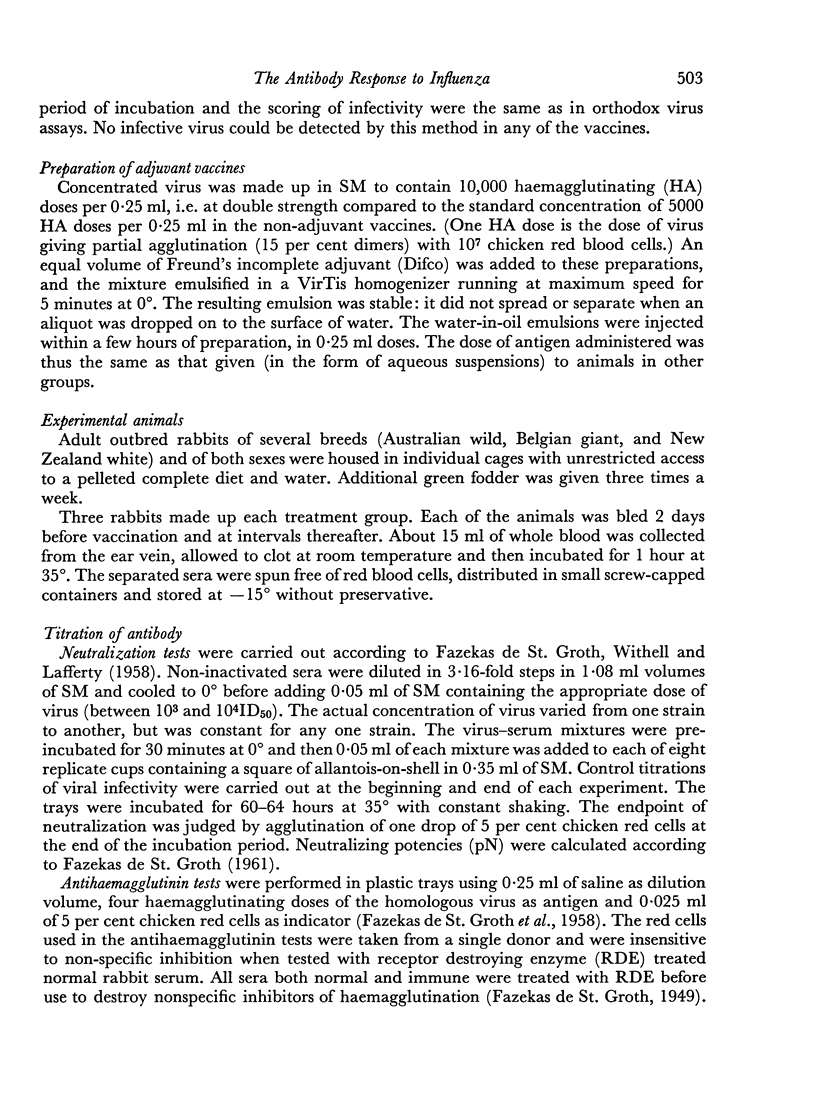
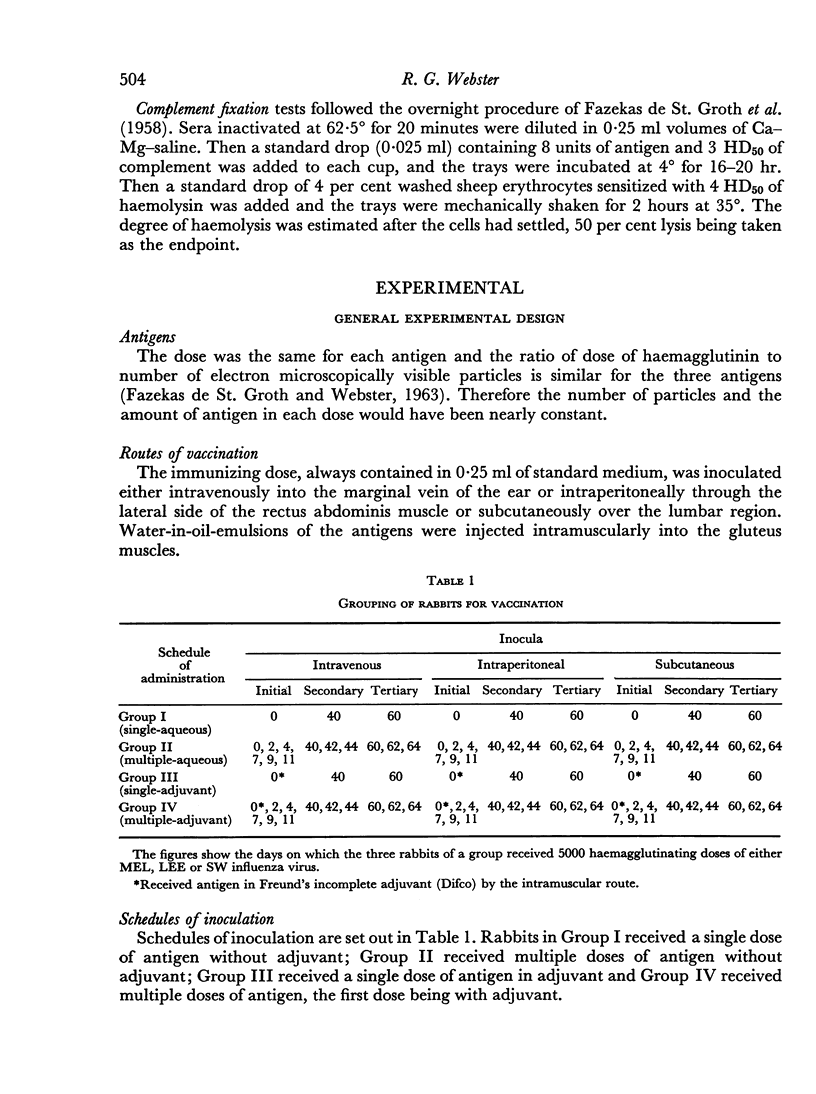
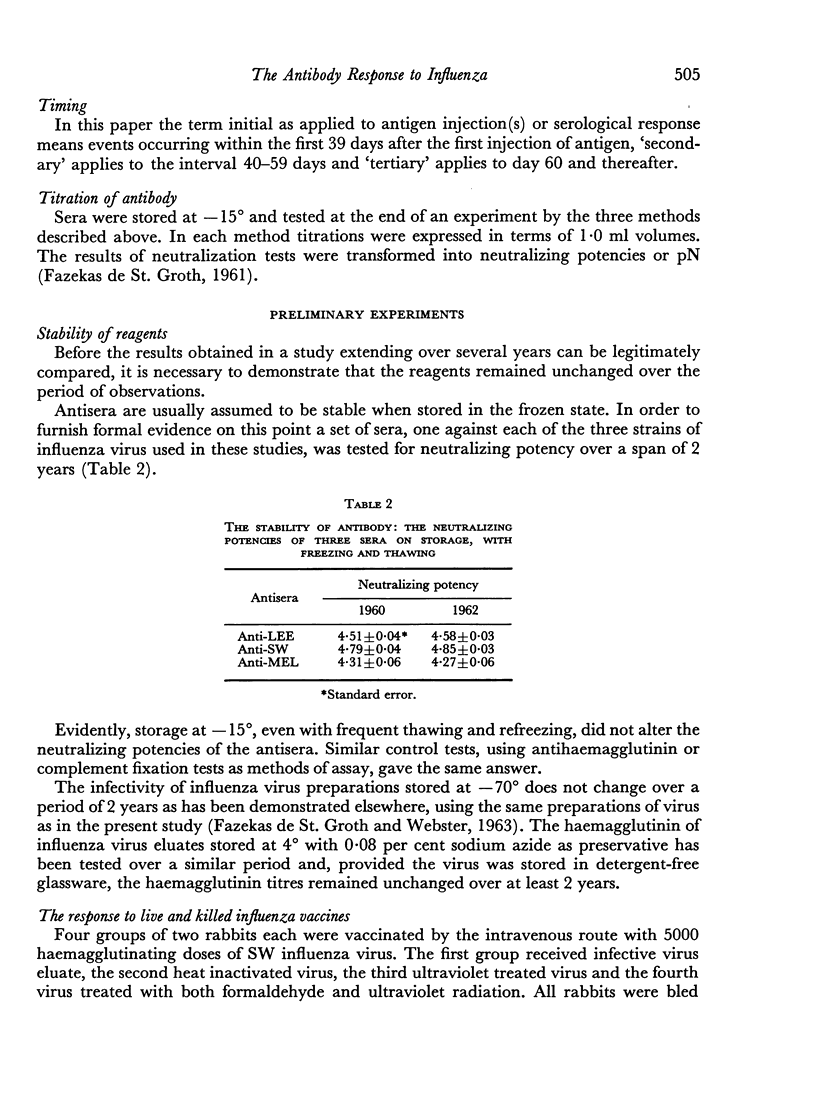
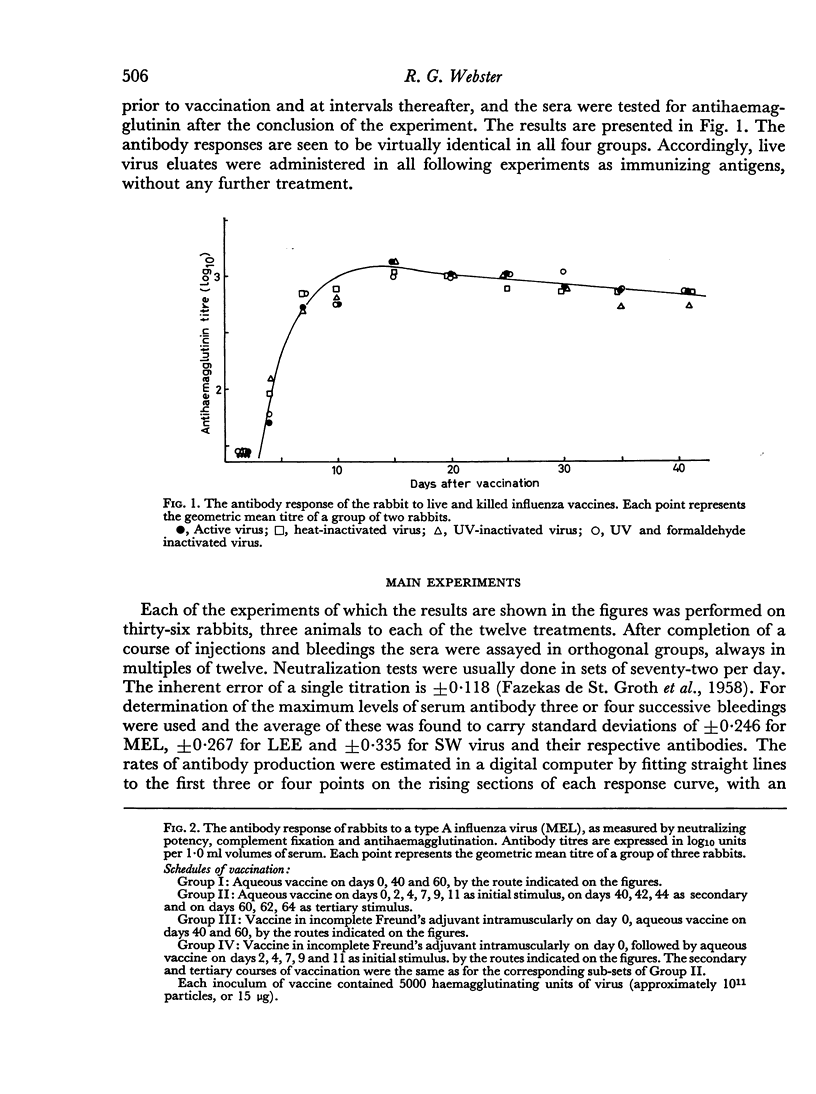
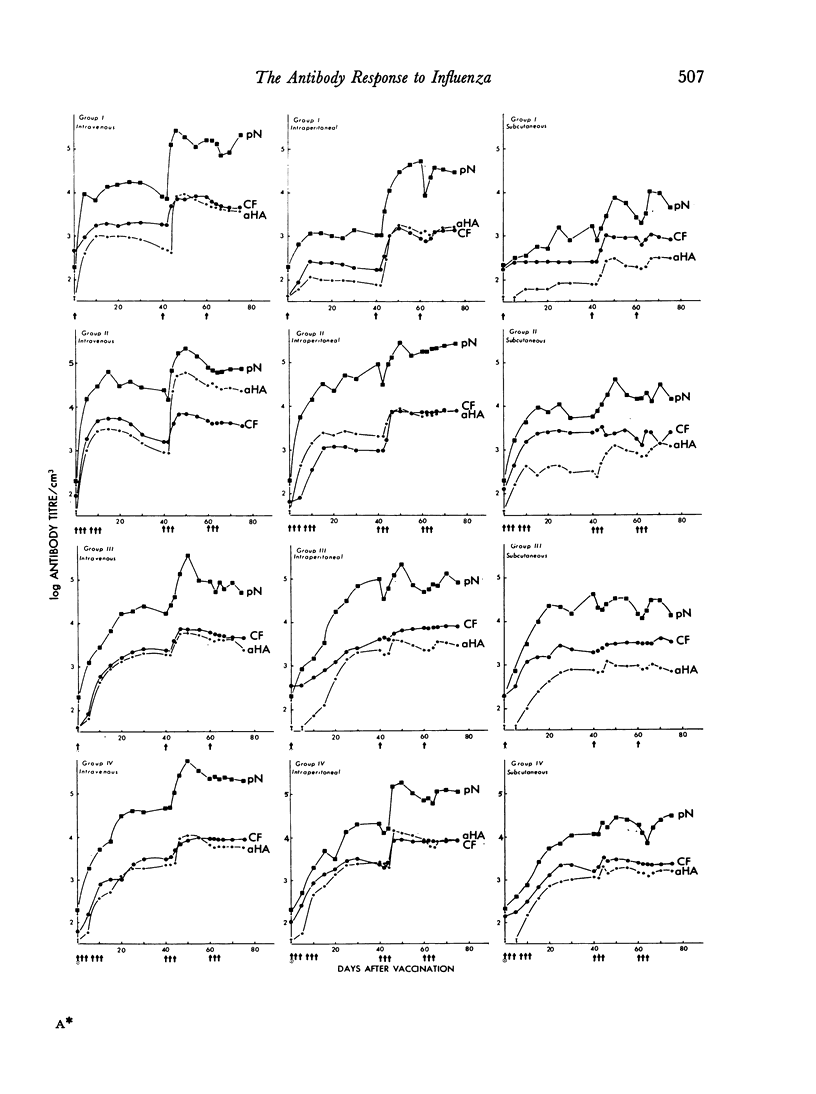
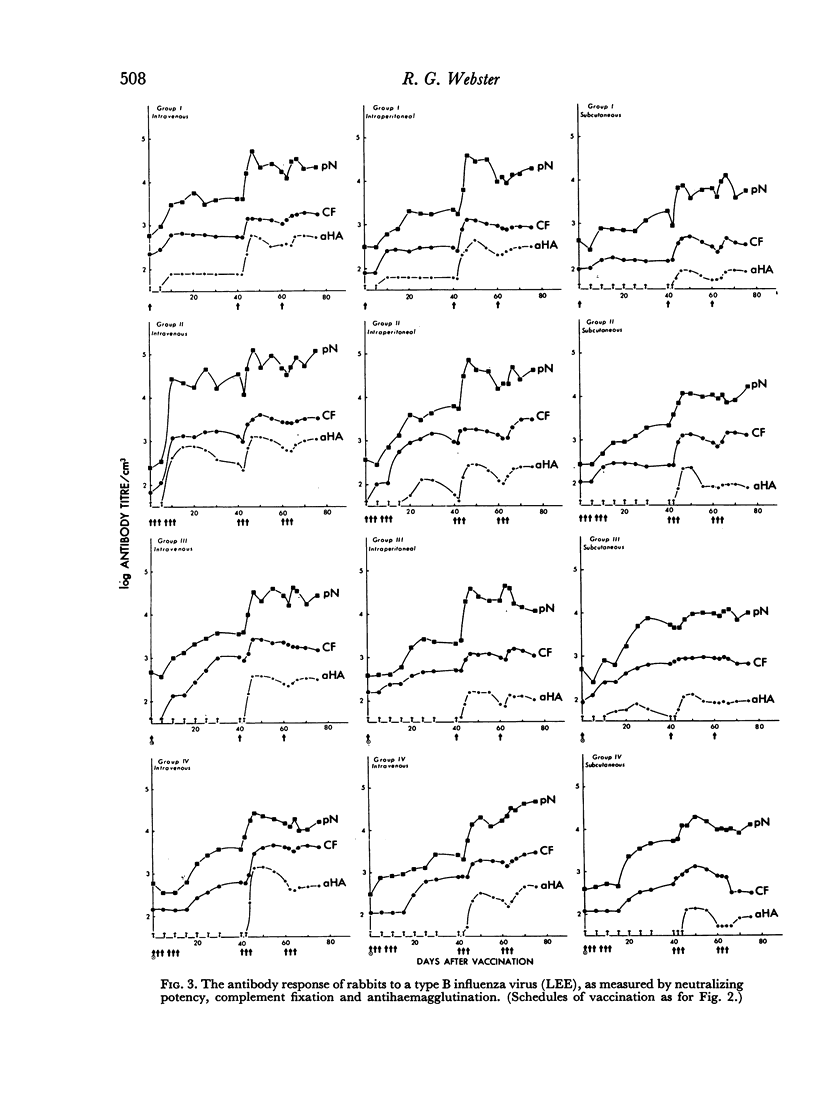
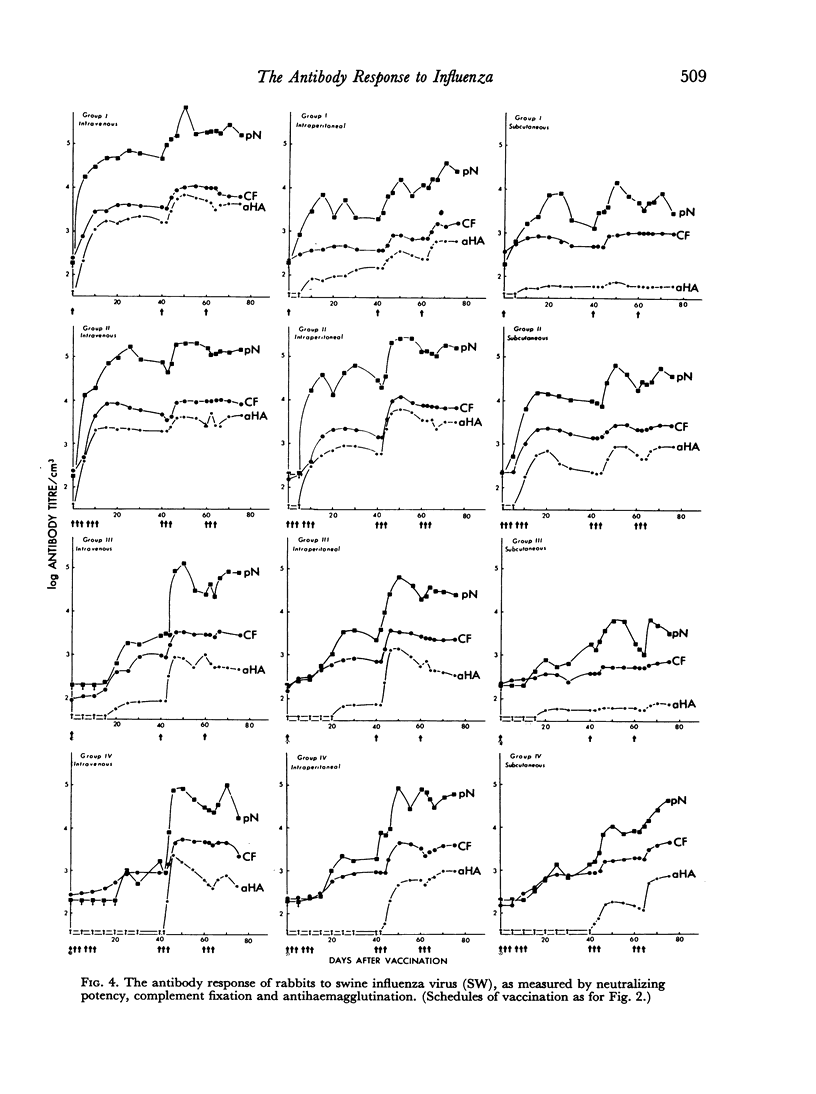
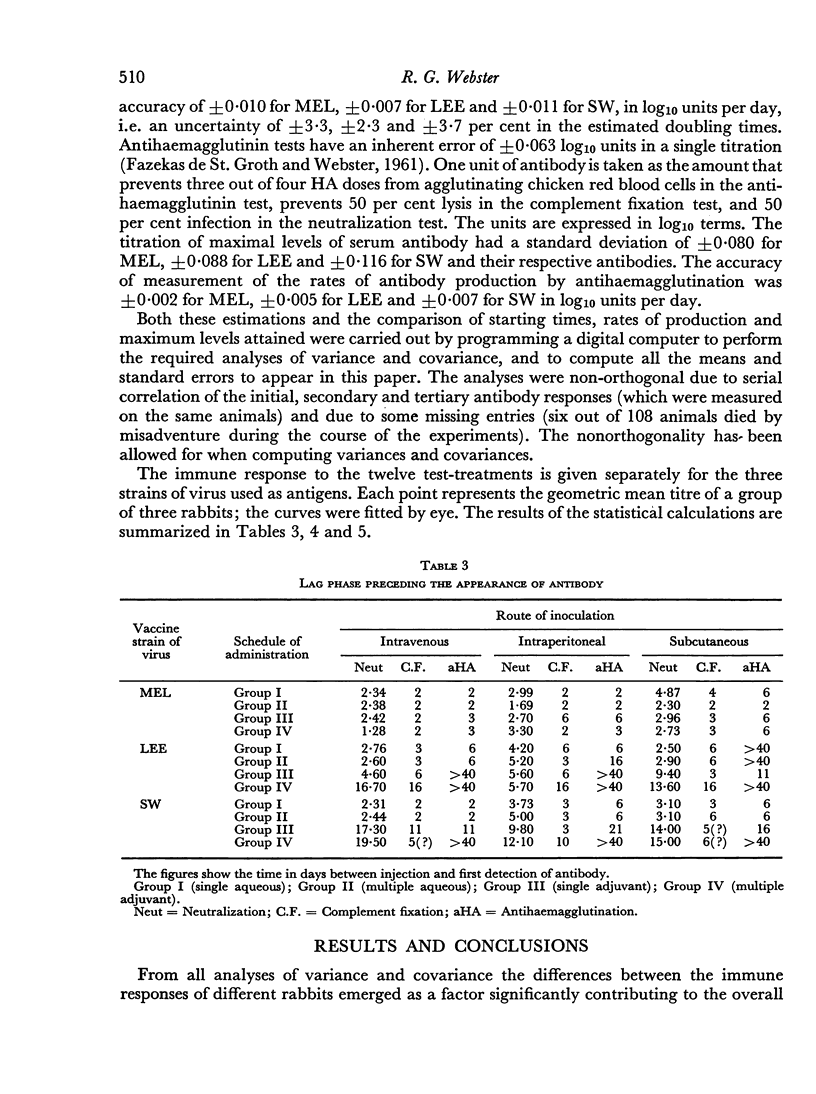
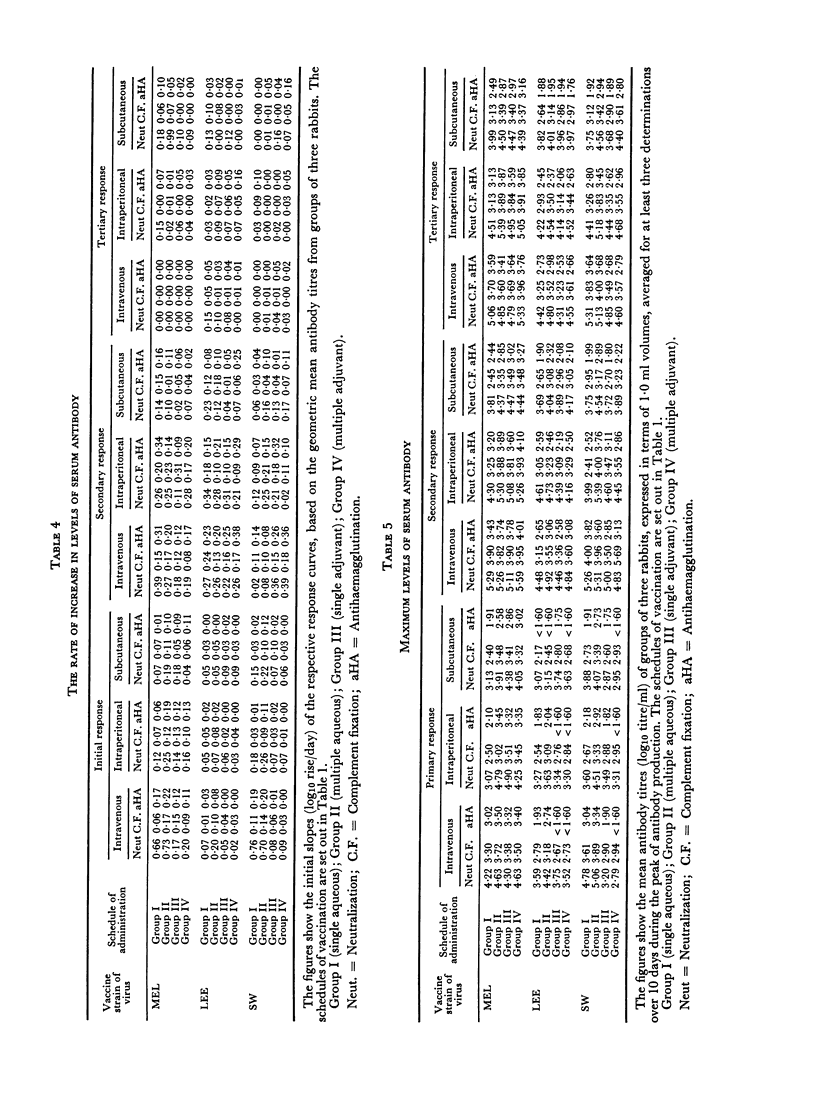
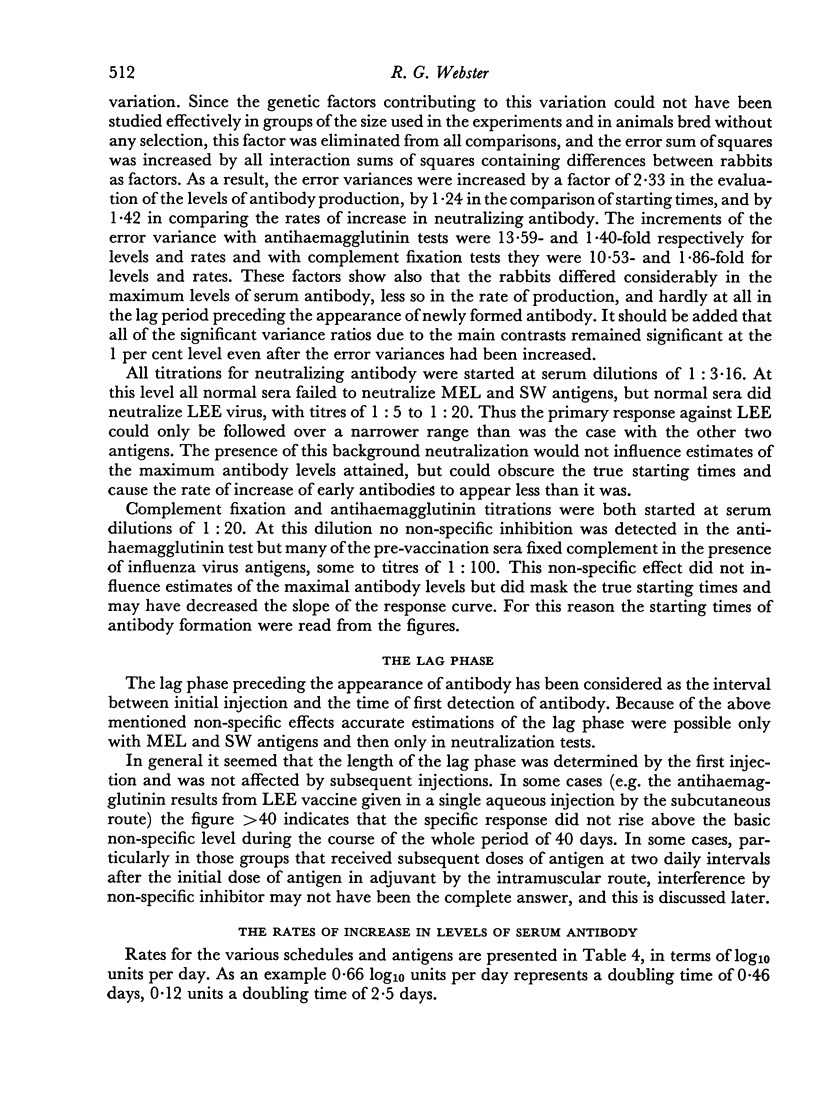
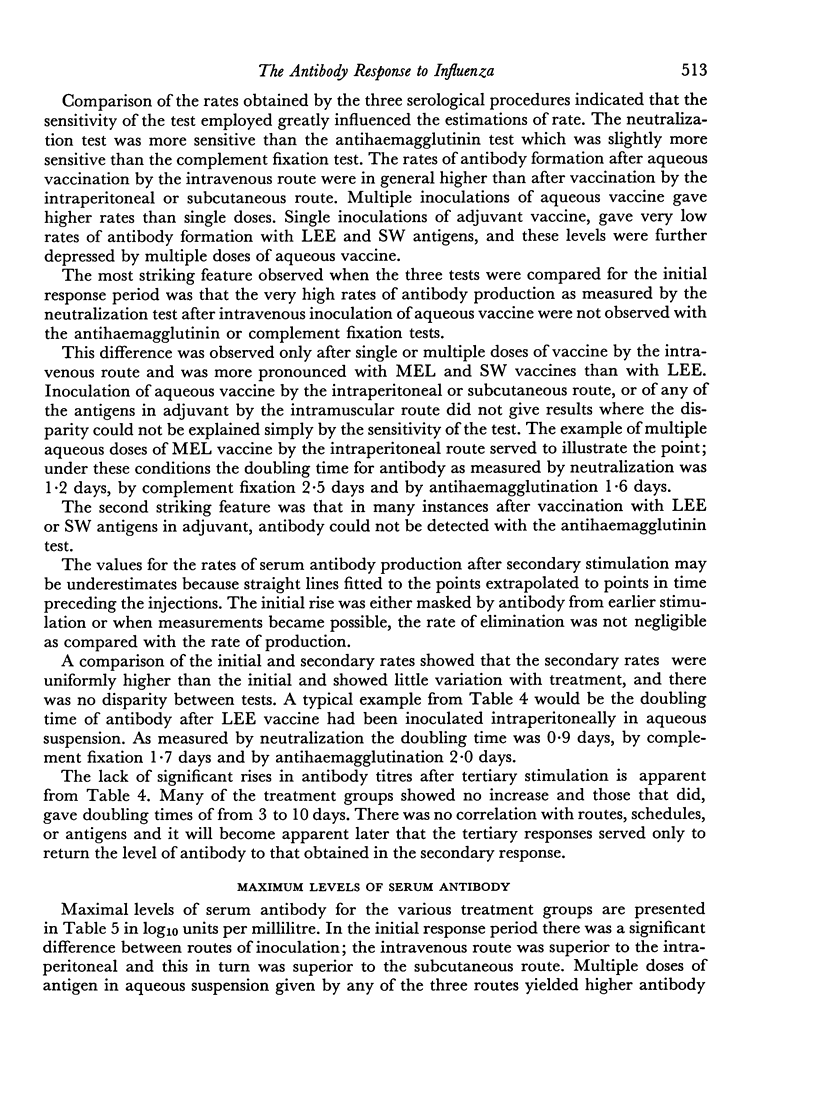
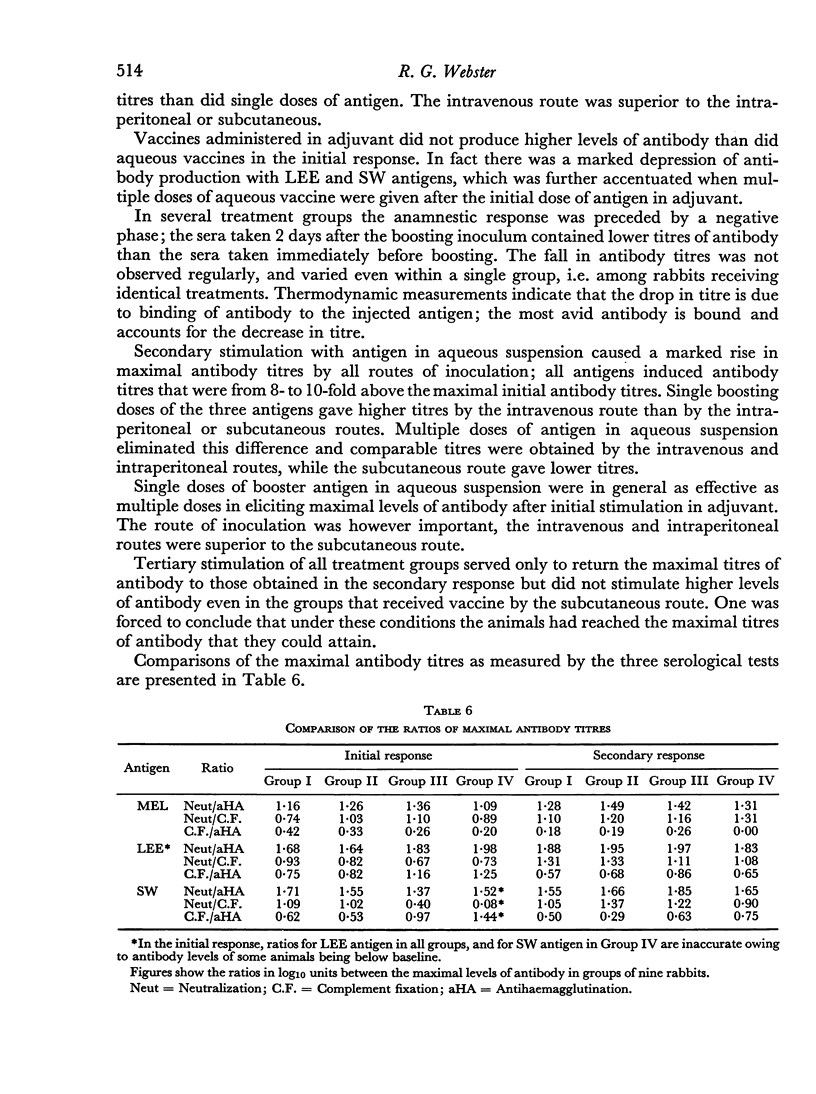
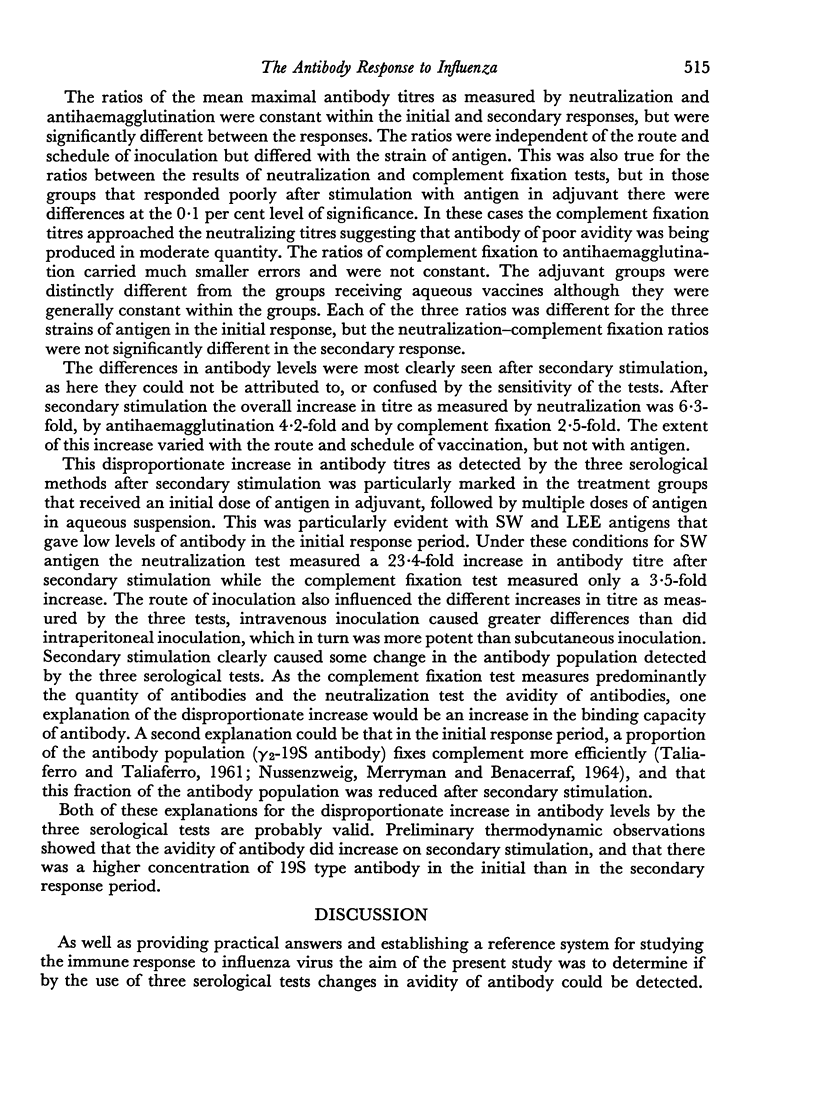
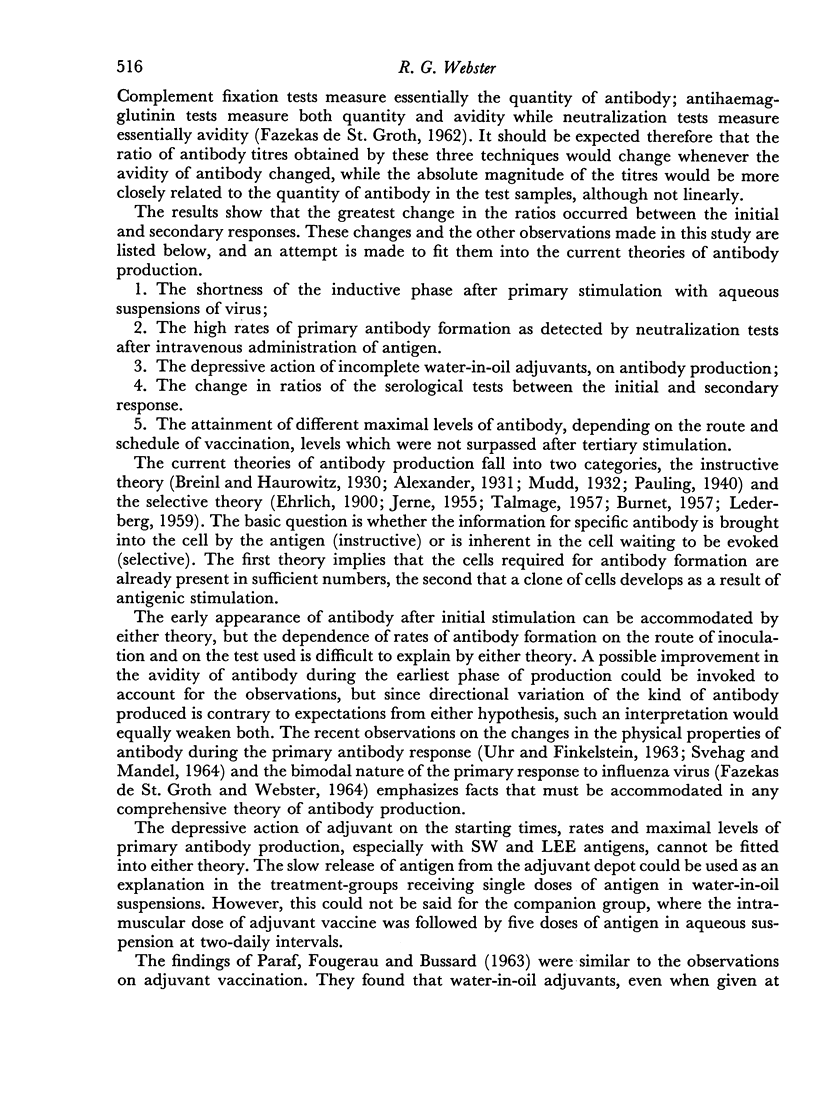
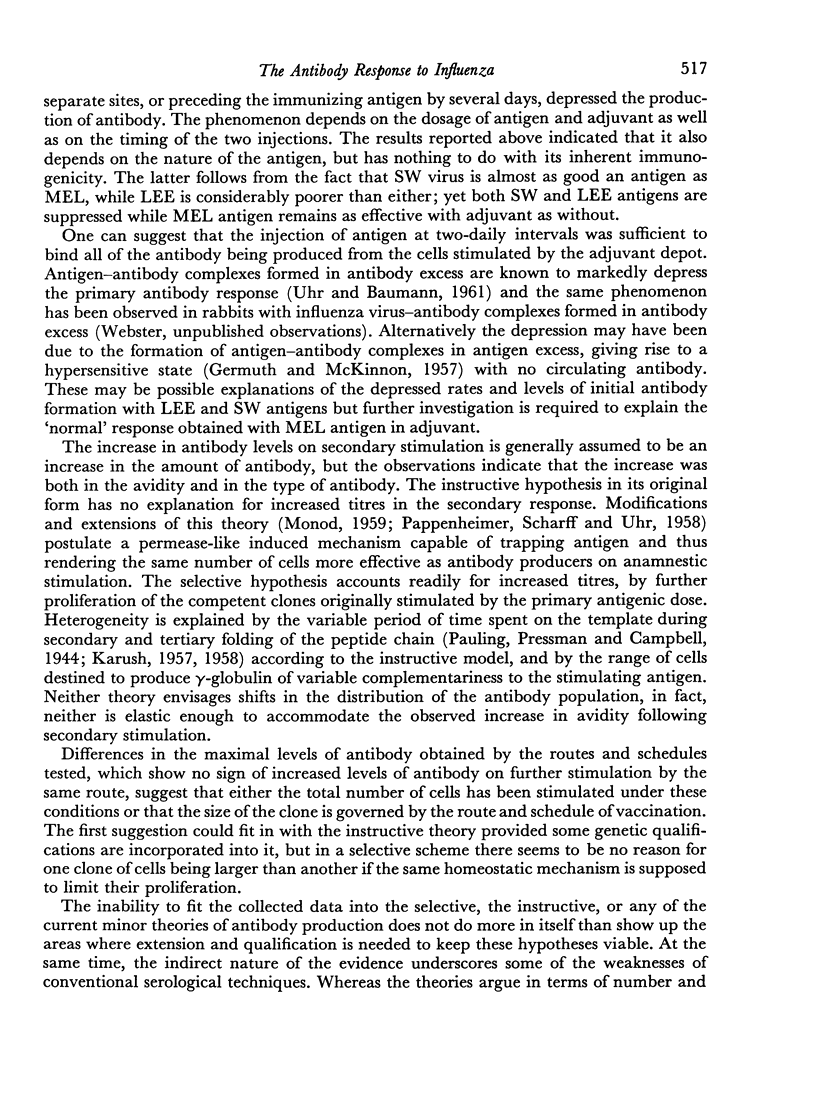
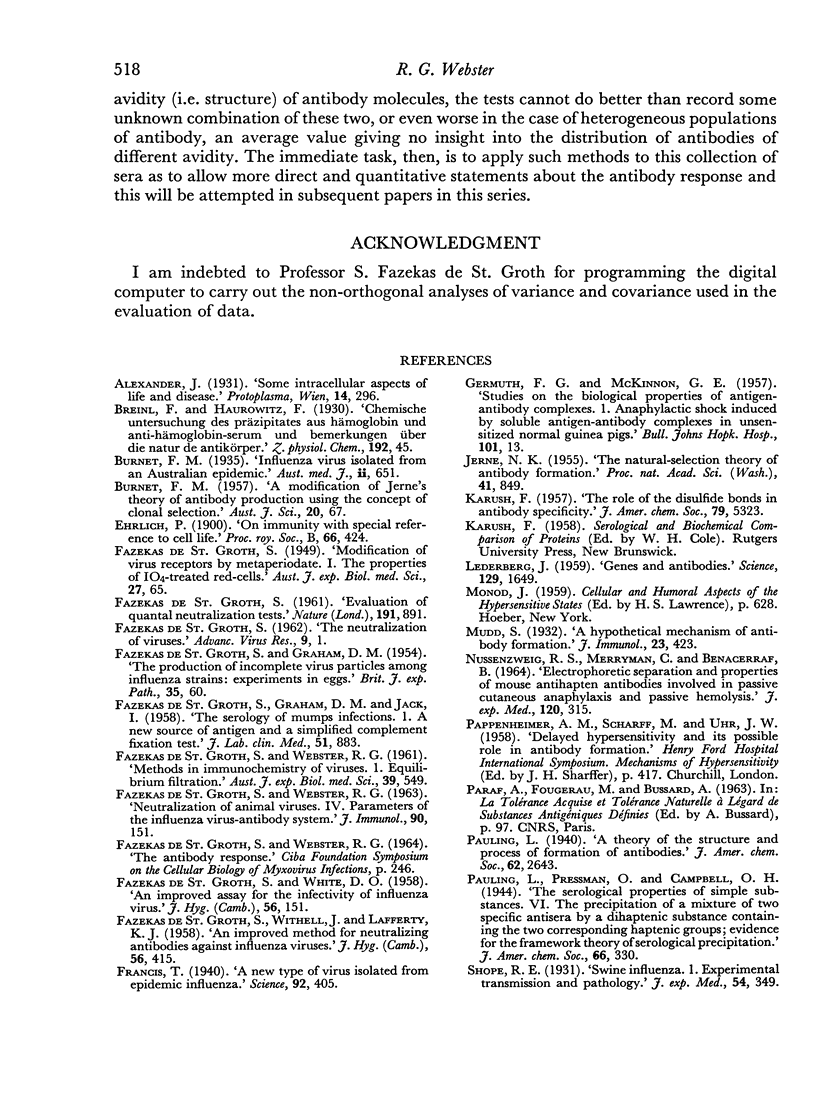
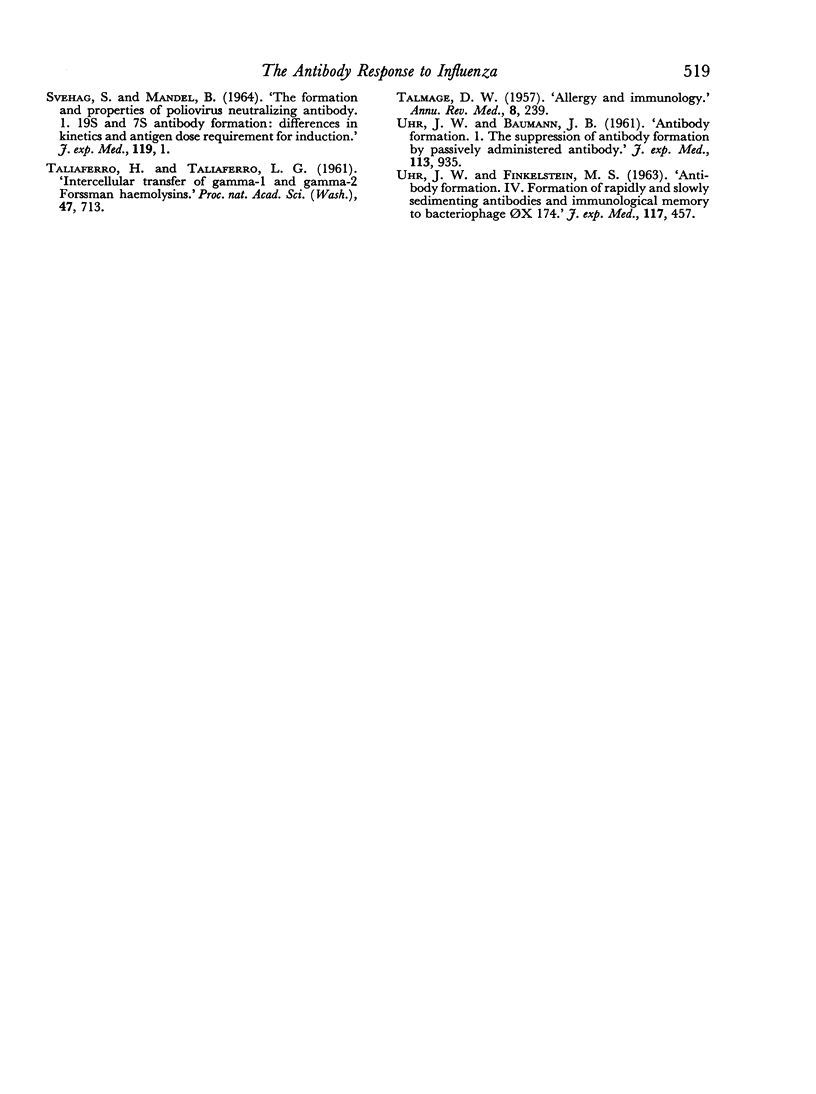
Selected References
These references are in PubMed. This may not be the complete list of references from this article.
- DE ST GROTH S. F., WITHELL J., LAFFERTY K. J. An improved assay method for neutralizing antibodies against influenza viruses. J Hyg (Lond) 1958 Sep;56(3):415–426. doi: 10.1017/s0022172400037906. [DOI] [PMC free article] [PubMed] [Google Scholar]
- FAZEKAS DE ST GROTH S., GRAHAM D. M., JACK I. The serology of mumps infections. I. A new source of antigen and a simplified complement fixation test. J Lab Clin Med. 1958 Jun;51(6):883–896. [PubMed] [Google Scholar]
- Francis T., Jr A NEW TYPE OF VIRUS FROM EPIDEMIC INFLUENZA. Science. 1940 Nov 1;92(2392):405–408. doi: 10.1126/science.92.2392.405. [DOI] [PubMed] [Google Scholar]
- GERMUTH F. G., Jr, MCKINNON G. E. Studies on the biological properties of antigen-antibody complexes. I. Anaphylatic shock induced by soluble antigen-antibody complexes in unsensitized normal guinea pigs. Bull Johns Hopkins Hosp. 1957 Jul;101(1):13–44. [PubMed] [Google Scholar]
- Jerne N. K. THE NATURAL-SELECTION THEORY OF ANTIBODY FORMATION. Proc Natl Acad Sci U S A. 1955 Nov 15;41(11):849–857. doi: 10.1073/pnas.41.11.849. [DOI] [PMC free article] [PubMed] [Google Scholar]
- LEDERBERG J. Genes and antibodies. Science. 1959 Jun 19;129(3364):1649–1653. doi: 10.1126/science.129.3364.1649. [DOI] [PubMed] [Google Scholar]
- NUSSENZWEIG R. S., MERRYMAN C., BENACERRAF B. ELECTROPHORETIC SEPARATION AND PROPERTIES OF MOUSE ANTIHAPTEN ANTIBODIES INVOLVED IN PASSIVE CUTANEOUS ANAPHYLAXIS AND PASSIVE HEMOLYSIS. J Exp Med. 1964 Aug 1;120:315–328. doi: 10.1084/jem.120.2.315. [DOI] [PMC free article] [PubMed] [Google Scholar]
- SVEHAG S. E., MANDEL B. THE FORMATION AND PROPERTIES OF POLIOVIRUS-NEUTRALIZING ANTIBODY. I. 19S AND 7S ANTIBODY FORMATION: DIFFERENCES IN KINETICS AND ANTIGEN DOSE REQUIREMENT FOR INDUCTION. J Exp Med. 1964 Jan 1;119:1–19. doi: 10.1084/jem.119.1.1. [DOI] [PMC free article] [PubMed] [Google Scholar]
- TALIAFERRO W. H., TALIAFERRO L. G. Intercellular transfer of gamma-1 and gamma-2 Forssman hemolysins. Proc Natl Acad Sci U S A. 1961 May 15;47:713–724. doi: 10.1073/pnas.47.5.713. [DOI] [PMC free article] [PubMed] [Google Scholar]
- TALMAGE D. W. Allergy and immunology. Annu Rev Med. 1957;8:239–256. doi: 10.1146/annurev.me.08.020157.001323. [DOI] [PubMed] [Google Scholar]
- UHR J. W., BAUMANN J. B. Antibody formation. I. The suppression of antibody formation by passively administered antibody. J Exp Med. 1961 May 1;113:935–957. doi: 10.1084/jem.113.5.935. [DOI] [PMC free article] [PubMed] [Google Scholar]
- UHR J. W., FINKELSTEIN M. S. Antibody formation. IV. Formation of rapidly and slowly sedimenting antibodies and immunological memory to bacteriophage phi-X 174. J Exp Med. 1963 Mar 1;117:457–477. doi: 10.1084/jem.117.3.457. [DOI] [PMC free article] [PubMed] [Google Scholar]


